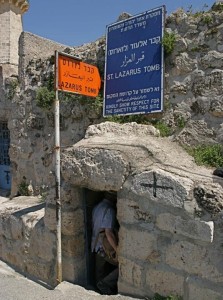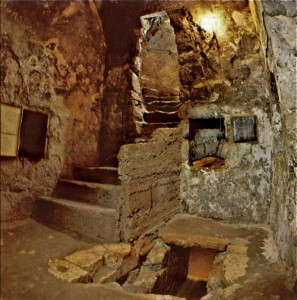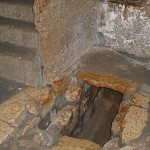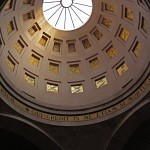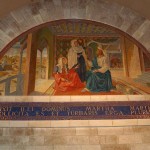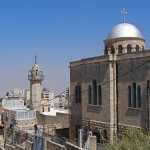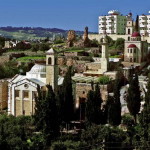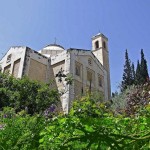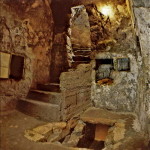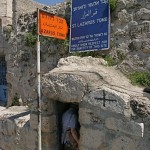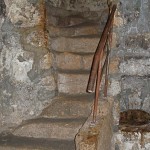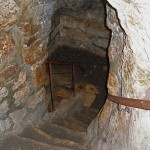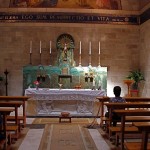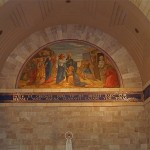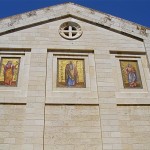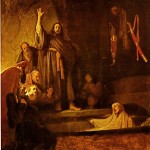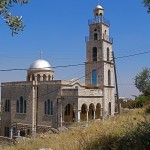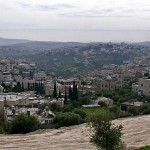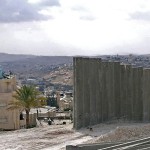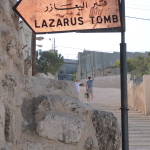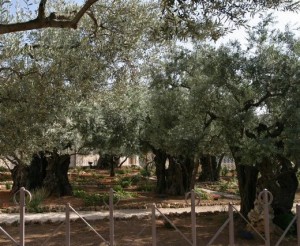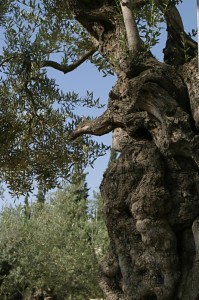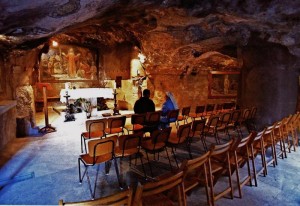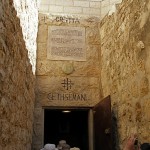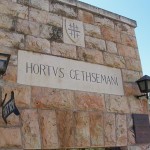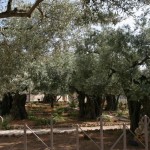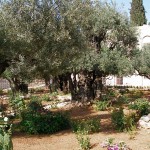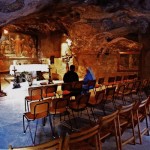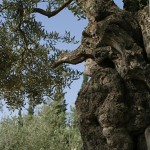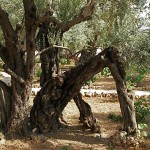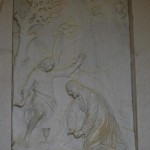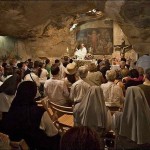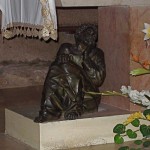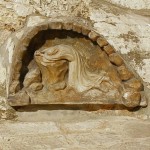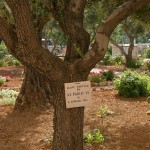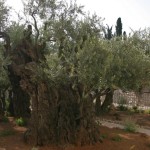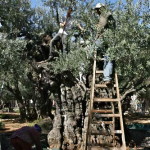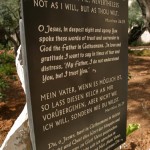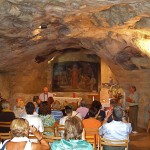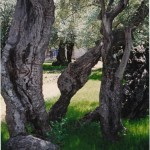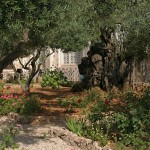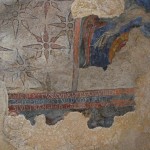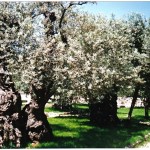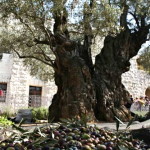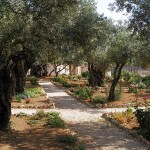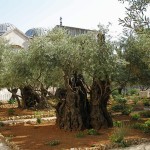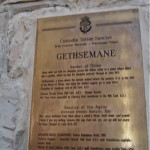West Bank
The little village of Bethany, on the eastern slope of the Mount of Olives about 3km from Jerusalem, was a favourite place of rest and refuge for Jesus.
Here he knew the intimacy and friendship of his friends Martha, Mary and Lazarus. And here, in the cemetery just below the village, he raised Lazarus from the dead.
When Lazarus was dying, as John’s Gospel (11:1-44) recounts, his sisters sent for Jesus. But Jesus delayed his arrival until four days after Lazarus had been buried, “so that the Son of God may be glorified”.
Arriving at the tomb, Jesus called: “Lazarus, come out!” To the amazement of mourners who had witnessed the burial, the dead man walked out. This miracle confirmed the determination of the religious leaders in Jerusalem to have Jesus put to death.
Bethany (not to be confused with Bethany Beyond the Jordan, where Christ was baptised) is also associated with two other events:
• While Christ was visiting his friends’ home, Martha complained that her sister Mary, sitting at the Lord’s feet and listening to him, had left all the work to her. Christ replied: “Mary has chosen the better part, which will not be taken away from her”. (Luke 10:38-42)
• At dinner in the house of Simon the Leper, a week before the crucifixion, Mary took a jar of expensive ointment and poured it over Christ’s feet — an act he saw as the anointing of his body for burial. (John 12:1-8).
Pilgrims since early centuries
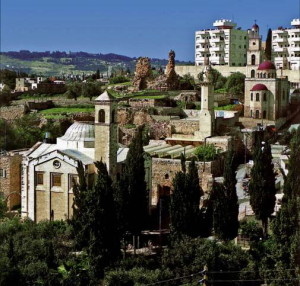
View of Bethany, with, from left, the Catholic Church of St Lazarus, the Al-Ozir Mosque and the Greek Orthodox church (© Welcometohosanna.com)
The present Arab village, on the south-eastern slope of the Mount of Olives, is called Al-Azariyeh, an Arabic version of Lazarus. The original village was probably higher up the hill to the west of the tomb of Lazarus.
The Franciscan Albert Storme says the reason why pilgrims have been drawn to this place is not based on “some ‘casual’ wonder. In their eyes, Lazarus’ resurrection prefigured that of Christ, and heralded their own return from the grave.”
Christian churches have been built here since the early centuries. In AD 333, the Anonymous Pilgrim of Bordeaux reported seeing “the crypt where Lazarus had been laid to rest”.
By the 14th century the churches were in ruins and the original entrance to the tomb had been turned into a mosque. In the 16th century the Franciscans cut through the soft rock to create the present entrance.
27 steps to burial chamber
Today’s pilgrims enter from the street down a flight of 24 well-worn and uneven steps to a vestibule. Three more steps lead to the burial chamber, little more than 2 metres long. Tradition says Jesus stood in the vestibule to call Lazarus from the grave.
The present Catholic church, with mosaics depicting the events that occurred here, was built in 1954. Architect Antonio Barluzzi contrasted the sadness of death with the joy of resurrection by designing a crypt-like, windowless church, into which light floods from the large oculus in its dome.
A Greek Orthodox church, dedicated to Simon the Leper, is to the west of the tomb.
Since 2005 Bethany, in the West Bank, has been cut off from Jerusalem by Israel’s separation wall. The wall actually cuts across the main street, making a serious impact on the live of residents and on the town’s economy.
What used to be a 10-minute drive from the Mount of Olives to Bethany now requires a lengthy detour, so the Tomb of Lazarus has become isolated from the normal pilgrim and tourist route.
In Scripture:
Jesus raises Lazarus to life: John 11:1-44
Jesus visits Martha and Mary: Luke 10:38-42
The anointing at Bethany: John 12:1-8
Administered by: Franciscan Custody of the Holy Land
Tel.: 972-2-2799291
Open: Apr-Sep 8-11.25am, 2-6pm, Oct-Mar 8-11.25am, 2-5pm
- Entrance to Lazarus’ burial chamber (Seetheholyland.net)
- Dome of Church of St Lazarus (Seetheholyland.net)
- Mary and Martha with Christ, in Church of St Lazarus (Seetheholyland.net)
- Mosque stands between two Christian churches in Bethany (Seetheholyland.net)
- View of Bethany, with, from left, the Catholic Church of St Lazarus, the Al-Ozir Mosque and the Greek Orthodox church (© Welcometohosanna.com)
- St Lazarus Church in Bethany (© Custodia Terrae Sanctae)
- Inside the Tomb of Lazarus, with the burial chamber at lower right (© Welcometohosanna.com)
- Entrance to the Tomb of Lazarus (Seetheholyland.net)
- Steps up from Tomb of Lazarus (Seetheholyland.net)
- Steps down to Tomb of Lazarus (Seetheholyland.net)
- Altar in the Church of St Lazarus (Seetheholyland.net)
- Jesus raising Lazarus, in the Church of St Lazarus (Seetheholyland.net)
- Lazarus flanked by Mary (left) and Martha on the facade of the Church of St Lazarus (Seetheholyland.net)
- The Raising of Lazarus, by Rembrandt (Los Angeles County Museum of Art, Los Angeles)
- Greek Orthodox Church near the Tomb of Lazarus (Seetheholyland.net)
- View from Bethphage towards Bethany before the separation wall was erected (© BiblePlaces.com)
- View from Bethphage towards Bethany after work began on the separation wall (© BiblePlaces.com)
- Tomb of Lazarus with security wall in background (Seetheholyland.net)
References
Murphy-O’Connor, Jerome: The Holy Land: An Oxford Archaeological Guide from Earliest Times to 1700 (Oxford University Press, 2005)
Wareham, Norman, and Gill, Jill: Every Pilgrim’s Guide to the Holy Land (Canterbury Press, 1996)
Storme, Albert: “Bethany”, Holy Land, Winter 2000 and Summer 2003
External links

